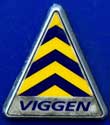|
Previa_fun posted:The other day I misremembered flight 3701 as a Delta Connection flight and kind of went What morons.
|
|
|
|

|
| # ? Jun 7, 2024 23:40 |
|
After building plenty of lovely Revell and Monogram kits, Tamiya's quality and attention to detail was refreshing.
|
|
|
|
SyHopeful posted:After building plenty of lovely Revell and Monogram kits, Tamiya's quality and attention to detail was refreshing. I love me some new tooling Airfix, but not everyone agrees. Their WW2 fighters are all really nice to build and paint up real purty. Revell OF GERMANY (blue boxes), is also nice on the the price/quality comparison Tamiya is moving into the expensive but worth it category, though I find the kits a bit fiddly I don't have a ton of experience with Hasegawa and Eduard, but some people swear by them. Scale modeling thread is here: http://forums.somethingawful.com/showthread.php?threadid=3148869
|
|
|
|
Godholio posted:Didn't they produce an early SLBM so accurately the Navy got pissed that it actually gave away classified details? Huh. But Rickover was always full of himself. How did he even get to have his authority over all appointments?
|
|
|
|
Jonny Nox posted:Hasegawa Honest to god, first one to pop up when I searched Hasegawa on Amazon was this: Hasegawa J35J Draken Swedish Special Model Kit
|
|
|
|
YF19pilot posted:Oh, God, I remember that when it happened. One of my college roommates had printed out the flight recorder transcripts, I seem to recall the tower saying something like "I didn't think those things could fly that high." Couple of dopes ruining a perfectly good aircraft. What was the reason for the dual engine flameout in the first place?
|
|
|
|
Phanatic posted:What was the reason for the dual engine flameout in the first place? Excessive climb rate overstressed the engines, induced stall, lack of air through the compressor. Apparently you break civilian airplanes when you set the AP in vertical speed mode and achieve a climb rate of 5,000 fpm.
|
|
|
|
They also ignored the stick shake repeatedly.
|
|
|
|
And then they failed to follow engine restart procedure, and then they failed to glide to 1 of 3 airports in range.
|
|
|
|
And then they almost crashed into a row of houses.
|
|
|
|
iyaayas01 posted:And then they almost crashed into a row of houses.
|
|
|
|
block51 posted:I just read the Wikipedia article, so I was aware of all those individual facts, but when I read them put so succinctly, those pilots really do come off as grade A twat-heads. They are. If I remember correctly, both pilots were relatively green, and still had that 'Iceman' mentality that a lot of student pilots get when the first get that commercial rating. Cocky, arrogant, devil may care.
|
|
|
|
The co-pilot was 23 years old, so I'm sure he was a positive influence on the pilot! Anyway best annotation is at the end of that Wiki article. http://darwinawards.com/darwin/darwin2004-11.html I'm just glad those idiots didn't take anyone on the ground with them.
|
|
|
|
SeaborneClink posted:Excessive climb rate overstressed the engines, induced stall, lack of air through the compressor. Apparently you break civilian airplanes when you set the AP in vertical speed mode and achieve a climb rate of 5,000 fpm. Setting the AP to something crazy is the only way to have fun! Lets trade seats. I'm going to grab something from the galley, want anything?
|
|
|
|
hobbesmaster posted:Setting the AP to something crazy is the only way to have fun! Lets trade seats. I'm going to grab something from the galley, want anything? But they set the AP to 500fpm VS, which is still a crazy setting for FL380-FL410, but not so crazy when you're at FL230
|
|
|
|
The brief factual report of the Pinnacle 3701 accident is here The full report is here Phanatic posted:What was the reason for the dual engine flameout in the first place? From the full report (text heavy, sorry): quote:p.45 quote:p.45 quote:p.46 quote:Flameouts at high power and high altitude produce even greater thermal distress because internal temperatures are the hottest at high power settings and the air is colder at high altitudes. The increased thermal shock exacerbates the loss of component clearance and alignment. Because the accident engines flamed out under these conditions, axial misalignment caused the seal teeth, which were positioned aft of their normal operating grooves, to contact stationary abradable material when radial seal clearances closed down. Once core rotation stopped, binding prevented core rotation from resuming during the windmill and APU-assisted restart attempts. No physical evidence of core lock was found inside the engines because the thermally induced interference occurred after core rotation The Ferret King fucked around with this message at 19:07 on Dec 29, 2013 |
|
|
|
Random question - What's the typical buffer zone an airliner gets while crusing, from other jets? Reason for asking, I was travelling SFO-IAD yesterday, we were at cruising altitude, somewhere north of 30k, I was looking out the window and was surprised to see another United jet streak by travelling the opposite direction. Usually it's not hard to see other planes around while flying, but the thing was, this seemed REALLY close - like maybe 300-400 yards to our right, maybe 100-200 yards below, coming almost directly opposite us. Close enough to clearly read "UNITED" stamped on the side, at least. Struck me as oddly close for being in the middle of the drat country at 30k+ ft. Is that in any way out of the ordinary?
|
|
|
|
onezero posted:Random question - What's the typical buffer zone an airliner gets while crusing, from other jets? Reason for asking, I was travelling SFO-IAD yesterday, we were at cruising altitude, somewhere north of 30k, I was looking out the window and was surprised to see another United jet streak by travelling the opposite direction. Usually it's not hard to see other planes around while flying, but the thing was, this seemed REALLY close - like maybe 300-400 yards to our right, maybe 100-200 yards below, coming almost directly opposite us. Close enough to clearly read "UNITED" stamped on the side, at least. Struck me as oddly close for being in the middle of the drat country at 30k+ ft. Is that in any way out of the ordinary? 1,000ft vertical, usually. And it DOES look very close out the window. Completely normal. Lateral separation varies depending on the ATC environment you're operating in, could be 3, 5, 10 or 20 miles. Or even measured in time, like 10 minutes in-trail separation. For example, this is likely 2,000ft of vertical separation (could even be 4,000ft I'm not real familiar with eyeballing this stuff): https://www.youtube.com/watch?v=t6ItoBBEbEI There are also situations where aircraft can be separated by 500ft vertical, so you can imagine how close that looks. If visual separation is being applied, pilots can get as close as they want. This isn't used up at cruise altitudes, and pilots if airliners would likely not get any closer to other aircraft than the prescribed minima anyway (not that pilots are necessarily aware of ATC minima, but you can see how close it all looks, most pilots don't selectively fly that close to other aircraft without some sort of positive control). If it helps, all airliners in the US have TCAS and if it was dangerously close you would probably have noticed a fairly rapid climb/descent maneuver followed by a return to altitude. https://www.youtube.com/watch?v=-5sA4vPA_6Q The Ferret King fucked around with this message at 19:20 on Dec 29, 2013 |
|
|
|
Don't think this got posted in this thread, Christmas Drop 2013: https://www.youtube.com/watch?v=MkrjhxA1w90 Worth watching in HD.
|
|
|
|
KingPave posted:Honest to god, first one to pop up when I searched Hasegawa on Amazon was this: Hasegawa J35J Draken Swedish Special Model Kit I haven't built a scale model since I was about 12 years old but now I'm tempted.
|
|
|
|
The Ferret King posted:There are also situations where aircraft can be separated by 500ft vertical, so you can imagine how close that looks. If visual separation is being applied, pilots can get as close as they want.
|
|
|
|
Delivery McGee posted:Has anybody ever flown airliners in close formation? Sounds like something Tex Johnston would do, but it must have been too hard to find a wingman as crazy as he was. El Al did it last year or maybe the year before? Sometimes the South Africans do it at Ysterplaat. It happens, but I don't think it ever has with pax.
|
|
|
|
Delivery McGee posted:Has anybody ever flown airliners in close formation? Sounds like something Tex Johnston would do, but it must have been too hard to find a wingman as crazy as he was. On revenue flights? Hell no. Without passengers? Look up anything done by Wolfe air and remember the camera is on a learjet that can't be very far from the target aircraft.
|
|
|
|
Delivery McGee posted:Has anybody ever flown airliners in close formation? Sounds like something Tex Johnston would do, but it must have been too hard to find a wingman as crazy as he was. Yea, I've been a part of that kind of thing. 
|
|
|
|
Delivery McGee posted:Has anybody ever flown airliners in close formation? Sounds like something Tex Johnston would do, but it must have been too hard to find a wingman as crazy as he was. Airbus likes to do promos and airshow stuff like that. Boeing probably does too. http://youtu.be/VYiov0qwQSQ http://youtu.be/6IbAy2SFgII
|
|
|
|
This is really high on my list of "things I don't want to see on my ramp in the morning." Oddly, it's also really high on my list of "things I'm going to take pictures of anyway." TERRAIN. TERRAIN. PULL UP!  Ice storm last weekend, 10 more inches of snow last night, plus a cargo compartment full of records boxes and an unknown (but probably minimal right now) amount of fuel on board. Lots of extra weight behind the landing gear, and probably a stiff gust of wind or two was enough to overbalance it. No damage though, nice soft rotation into the snow behind it and an equally soft touchdown once some of the snow and ice was removed. I loving love winter.
|
|
|
|
Linedance posted:Airbus likes to do promos and airshow stuff like that. Boeing probably does too. Silly french soundtracks. Mute the left video
|
|
|
|
Something new in the junkyard today. Not what I would have expected. Really need to drop by and talk to the owner of the yard and find out where he is getting this crap and why. Also this:  For a minute there I figured that the Mig-23 had to be one of the Constant Peg aircraft, but it looks like it is ex-Polish.
|
|
|
|
iyaayas01 posted:Don't think this got posted in this thread, Christmas Drop 2013: Oh hey sup, I'm in the 36th but I didn't go to Christmas Drops this year - still, I can answer any/most questions you might have about dropping thugs out of planes!
|
|
|
|
Delivery McGee posted:Has anybody ever flown airliners in close formation? Powercube posted:Sometimes the South Africans do it  EDIT: Tables. Click for huge.
|
|
|
|
Today’s effortpost is about something a little different; it’s American, it can’t takeoff or land and it doesn’t even have a pilot in it! We Never Said Anything about UNMANNED Overflights, Did We? The Story of the Lockheed D-21 On the First of May, 1960, a Lockheed U-2 spyplane operated by the Central Intelligence Agency was shot down over the Soviet Union; ten days later, President Dwight Eisenhower – ever worried about the implications of overflights of the Soviet Union – cancelled all further manned overflights of Soviet territory. This posed a problem to the United States; at the time, spy satellites were still largely theoretical and the need for intelligence on Soviet activities was still just as pressing and there is only so much that can be gathered by skirting the periphery of a country. At the same, rumblings from China indicated that they were up to all kinds of things; building nuclear weapons, modernising their military and acting (at least from the perspective of the Americans) in a manipulative manner in Vietnam and other South-East Asian states. This posed a serious problem for the CIA, as their follow-up aircraft to the U-2, the Lockheed A-12, was designed from the outset as an overflight vehicle; fine if your target isn’t in the Soviet Union or China, but useless otherwise. A solution was needed, and who better to ask than the man responsible for the A-12?  Lockheed A-12 reconnaissance aircraft. Forerunner to the SR-71; capable of only overflight reconnaissance. Kelly Imagines a Drone With their overflight problem in mind, in October of 1962 the CIA asked Lockheed’s director of special projects, Kelly Johnson, to come up with a solution...any solution. Johnson, ever a forward thinker, had already considered the possibility of an unmanned aircraft carried by the A-12; in fact, it was a role he had imagined for the aircraft from the day that “Project GUSTO” (the program that ultimately began the development of the A-12) began in 1958. An unmanned aircraft would be able to perform reconnaissance over the Soviet Union and China and not upset them...well, not upset them as much as a manned aircraft would, at least. Building this aircraft was to be quite a challenge, even for someone with the talent of Kelly Johnson. The performance needed and the flight profile of this drone meant that there was really only one choice for engines, that being a ramjet engine. A ramjet works by using its inlet shape and the forward motion of the vehicle to compress the air entering the engine, to which fuel is introduced and burned.  A basic diagram illustrating how a ramjet works. While a ramjet is mechanically simple (there are few, if any, moving parts) it does not work from zero speed and can only be tuned to work efficiently in a narrow band of airspeeds. Fortunately, this drone could be easily designed to negate both the major disadvantages of a ramjet; as such, Johnson concluded that ramjet power was indeed the best solution. However, one major hurdle remained – up until then, ramjet engines were either experimental or used in missiles, which meant that they were never intended to run for more than a few minutes. This new engine would need to run continuously for at least an hour and a half, and it would need provision to both throttle and relight itself...again, capabilities that hadn’t been demonstrated in a ramjet engine. Challenges started to emerge in the rest of the aircraft as well; the nature of the mission meant that the drone was to fly only once and to keep the weight and overall complexity down, Lockheed decided to recover as little of the aircraft as possible at the end of the mission. This meant that the camera and film would have to be compact and lightweight so that they could be recovered at the end of the mission; advances in electronics (which Kelly Johnson deeply distrusted) would be needed. In spite of all the challenges, Lockheed and its contractors were able to overcome nearly all of these hurdles. By the end of December in 1962, Lockheed had built a mock-up of their proposed aircraft for evaluation (including its radar cross-section) and Marquardt had successfully demonstrated a modified version of its RJ43 engine (used by the Boeing IM-99 Bomarc missile) that met all of the criteria set by Lockheed. With that out of the way, the CIA officially gave Lockheed the contract to build the Q-12 drone in March of 1963. How the Q-12 Works   Lockheed Q-12 (later D-21) reconnaissance drone (above and below). The Q-12 drone was to be mounted on a pylon on the back of an M-12 mothership (a modified Lockheed A-12 with a second crew station in the payload (or “Q”) bay). The M-12 would then takeoff and fly to its launch point, performing a gentle, 0.9-g outside loop at Mach 3 and 75,000 feet, at which point the Q-12 would be launched. The Q-12 would accelerate to Mach 3.5 and 95,000 feet and fly its pre-programmed mission up to 3,500 miles in length, taking roughly 90 minutes to do so.  Typical sequence of events for a D-21B mission. Steps 1 through 8 would not happen with a M-12/21 launch. At the end of the mission, a modified C-130 Hercules would take control of the Q-12, commanding it to descend to 60,000 feet to jettison the “hatch” – the aforementioned camera and film payload. Once the hatch was jettisoned, a destruct command would be given to the Q-12 and the C-130 would then proceed to snag the hatch’s parachute, much the same way that film canisters from early spy satellites were recovered. If the C-130 failed to collect the hatch, it was designed to float so that a ship could recover it if the need arose.  Lockheed JC-130B Hercules, practicing snagging a parachuted object. This is how the D-21’s sensor hatch was to be recovered. Overall, the mission profile for the D-21 was extremely complicated with lots of opportunity for failure, but it was felt that is was a necessity in order for the aircraft to achieve the level of performance required to complete its mission over very heavily defended airspace. By the end of 1963, the Q-12 and M-12 were redesignated as the D-21 and the M-21 (“Daughter” and “Mother” respectively), mostly to throw off anyone who was trying to figure out what the program was all about and its relation to the A-12 program proceeding concurrently. Captive carry tests began in December of 1964, but issues with the A-12’s engine inlets meant that progress was very slow. Additionally, it was determined that there was no safe way to dispose of the aerodynamic fairing over the D-21’s nose, so it was omitted from the design entirely.  Lockheed M-21 and D-21 flying together. The fairings over the nose and tail of the D-21 were omitted in later Tagboard flights. Finally, on the 5th of March, 1966, the M-21 launched the first D-21 test of the program, now designated “Project Tagboard”. Unfortunately, the D-21 experienced a failure and crashed, having covered only 170 miles. Nevertheless, the mission was considered a success, as it demonstrated that the launch method was sound, though test pilot Bill Park described the separation as being “the most dangerous maneuver we have ever been involved in, in any airplane I have ever worked on”. The second launch a few weeks later was more successful; the D-21 separated cleanly from the M-21 and flew for nearly 1,400 miles before the hydraulic pump failed, causing the aircraft to crash. The third launch, on the 16th of June, 1966, was more successful still; the D-21 flew a total of 1,800 miles over a complicated track as intended, with the only fault being the camera hatch not deploying properly at the end of the mission (a sign of things to come?). The next Tagboard mission was, to put it mildly, a complete failure. Instead of launching the D-21 in gentle low-G arc as before, the decision was made to launch it in a level, 1-g attitude. The D-21 started fine, but a matter of seconds after separation, the aircraft suffered an “unstart”, where the shockwaves in the engine inlet experience instability and disrupt airflow to the engine. The D-21 rolled over and collided with the M-21. Both crewmembers of the M-21 ejected safely, but the Launch Control Officer sustained injuries that ultimately caused him to drown in the Pacific Ocean. As serious safety concerns had been raised as early as the first Tagboard mission, the program was cancelled in favour using a more conventional launch platform for the D-21. Tagboard Becomes Senior Bowl After the second Tagboard mission, Kelly Johnson proposed the idea of using a Boeing B-52 Stratofortress as a launch platform for the D-21, primarily on the grounds of saving money (what a strange era!). His team devised a solid-fuelled booster rocket (itself larger and heavier than the D-21) to boost the D-21 up to Mach 1.5, the speed where its ramjet engine becomes effective, and onwards to Mach 3.0, where the booster would separate and the D-21 would begin its mission. With this combination of B-52 and D-21, it seemed as though the D-21 could conceivably photograph virtually any location on Earth. Work began on the new version of the D-21, designated the D-21B, as well as on a B-52H mothership. Combined, this program was given the title “Senior Bowl” in keeping with classified naming schemes used by various arms of the United States government, and was transferred to the Strategic Air Command of the United States Air Force.   D-21B on its pylon (above) and a pair of D-21Bs attached to a B-52H mothership. The D-21B was never launched from this configuration; it flew from the starboard pylon only. Senior Bowl proceeded very quickly and by the middle of 1967 captive flights had begun at Groom Lake. Unforunately, the program got off to an inauspicious start. One of the first captive flights was ended prematurely when the D-21 fell of the underwing pylon of the B-52H; the booster rocket fired but the drone crashed shortly after, not having been activated properly. Of the next seven launches, only one was a complete success, along with one partial success – the other five missions all experienced some sort of engine failure, typically with the ramjet not lighting properly (or even at all). After Kelly Johnson hastily convened a team of engineers to investigate, a number of deficiencies were found; the highly complex wiring harness of the sensor hatch (which also interfaced heavily with the other systems aboard the D-21B) was found to be an enormous pain in the rear end to get connected properly with the aircraft; the brittle Kapton wiring insulation (then a new product) was found to be breaking and chafing when ground crews connected the main cannon plug into the airframe, causing short circuits and all manner of broken wiring. Fixes were found and the program resumed in December of 1968, with three out of the next four launches being successful; the one outlier being caused by an issue with the autopilot.  D-21B caught from the overhead camera on the B-52H, just before booster ignition. With a string of successful flights, the Air Force declared the D-21B to be fit for operational service in July of 1969 and by November, the D-21B was sent on its first operational mission; to go photograph China’s nuclear weapons test facility at Lop Nor in the far north-west of the country. The launch of this first operational mission went flawlessly; the separation was clean and the booster performed perfectly. Shortly after, the ramjet light properly and the booster separated – the D-21B was performing flawlessly! Several hours later at the recovery zone, the JC-130B Hercules recovery aircraft, along with a US Navy frigate, waited for the return of the D-21...nothing; The D-21B never returned from its mission...cause unknown. It would come out much later (almost twenty years later in fact) that the D-21B’s autopilot had a flaw where it would stop working properly if it missed a checkpoint. This happened in the first D-21B mission, causing the aircraft to barrel along happily deep into the Soviet Union, where it landed virtually intact (oops!). Another test mission flew with a revised autopilot (it was surmised at the time that the autopilot might have been the problem) and the D-21B performed, yet again, absolutely flawlessly.  D-21B launch, with the booster rocket running. The second mission, in December of 1970 went without a hitch right up to the end, where the parachute for the sensor hatch failed, causing it to be destroyed on impact with the sea below. The third D-21B mission, which flew in March of 1971, was a comedy of errors; the D-21B performed as expected and to everyone’s relief, the sensor hatch parachute deployed properly! However, things began to go very wrong at that point. The JC-130B was unable to snag the hatch in mid-air, which is a somewhat of a setback, but not the end of the world, considering the hatch could float. Unfortunately, the Navy SEAL team deployed from the recovery ship couldn’t cut the parachute cables to recover the hatch. The idea was then hatched (sorry) to winch it aboard the recovery frigate...which would have worked had the frigate not driven over the hatch, damaging it irrevocably and sending it to the bottom of the ocean. Adding insult to injury, this D-21B’s destruct mechanism had been removed so that it could be recovered and studied after the flight; the Navy managed to sink that as well. Later that month, another D-21B was launched; like the previous three missions, its target was Lop Nor. Unfortunately, this mission ended in failure as well; nobody is sure (or at least is saying) what happened, but it is thought that the Chinese shot it down just after it finished photographing its target. At this point, the government had enough of the failures and completely cancelled the program; by this time, spy satellites had been proven to be a reliable means of reconnaissance and it was felt that the need for the D-21 just wasn’t there. An Epilogue, Soviet-Style Many years later, the director of Lockheed’s Skunk Works, Ben Rich, was given a curious gift by a KGB agent; a large section of black-painted titanium that was obviously an aircraft panel. It turned out that (as mentioned earlier) the first D-21B mission ended not over the Pacific Ocean, but over Siberia. Combined with wreckage recovered (supposedly) from the fourth D-21B mission, the Tupolev design bureau, then the leader in unmanned reconnaissance aircraft in the Soviet Union, was able to reverse-engineer the D-21B and come up with their own version. This aircraft, named ”Voron” (Raven), never progressed beyond the mock-up stage, as the Soviets too realised that the D-21 was far from ideal as a reconnaissance platform, and opted instead to use spy satellites.   Tupolev “Voron” diagram (above) and proposed carriage underneath a Tu-95 “Bear” (below). COMING NEXT WEEK: Centurions: Part 1 MrChips fucked around with this message at 06:06 on Dec 31, 2013 |
|
|
|
MAIN POSTS Myasishchev M-4 "Bison" Myasishchev M-50 "Bounder" Sukhoi T-4/Myasishchev M-18/Tupolev Tu-160 "Blackjack" Sukhoi Su-9/Su-15 "Fishpot"/"Flagon" Tupolev Tu-22 "Blinder/Tu-22M "Backfire" Tupolev Tu-128 "Fiddler" Mikoyan-Gurevich MiG-25 "Foxbat"/MiG-31 "Foxhound" Sukhoi Su-27 "Flanker" family Tupolev Tu-95 "Bear" SHORT POSTS McDonnell-Douglas/General Dynamics F-4X/RF-4X Tsybin RSR Lockheed D-21
|
|
|
|
holocaust bloopers posted:Yea, I've been a part of that kind of thing. There was actually a wing-to-wing midair between an E-3 and a KC-135 in the 90s over in the desert. They were taking pictures of each other. IIRC the tanker had two engines FOD out. MrChips posted:Additionally, it was determined that there was no safe way to dispose of the aerodynamic fairing over the D-21’s nose, so it was omitted from the design entirely. What was the issue here? If it's supposed to self-destruct, who cares what happens to the chines? Or did it interfere with the recoverables? Godholio fucked around with this message at 06:04 on Dec 31, 2013 |
|
|
|
MrChips posted:Nevertheless, the mission was considered a success, as it demonstrated that the launch method was sound, though test pilot Bill Park described the separation as being “the most dangerous maneuver we have ever been involved in, in any airplane I have ever worked on”. That's not the sound you want to hear from your test pilot… Anyway, there's a D-21B at the March Field Air Museum. Weird little thing, it looks like a piece of an SR-71 got removed and turned into its own aircraft.
|
|
|
|
Godholio posted:What was the issue here? If it's supposed to self-destruct, who cares what happens to the chines? Or did it interfere with the recoverables? It was an issue with the nose fairing coming into contact with the mothership. Looking at where the D-21 was mounted on the M-21, it's hard to imagine how the nose fairing could separate cleanly in a consistent manner.
|
|
|
|
The M-21/D-21 is also one of the better parts of Museum of Flight in Seattle. Lockheed M-21/D-21 Drone - 01 by notpsion, on Flickr e: pretty sure I posted this before but whatever, still owns. Psion fucked around with this message at 06:32 on Dec 31, 2013 |
|
|
|
That was cool to see when I visited as I never heard of it before. Cool to see a nice writeup with more info.
|
|
|
|
D-21's are pretty sweet. Even if they were a huge clusterfuck. 
|
|
|
|
Plinkey posted:D-21's are pretty sweet. Even if they were a huge clusterfuck. Is that the one in Blackbird Park?
|
|
|
|

|
| # ? Jun 7, 2024 23:40 |
|
Ardeem posted:Is that the one in Blackbird Park? Yeah.
|
|
|




 when I heard Delta's slogan "keep climbing."
when I heard Delta's slogan "keep climbing." 











 This poster loves police brutality, but only when its against minorities!
This poster loves police brutality, but only when its against minorities!



 Bad Angus! Bad!
Bad Angus! Bad!














